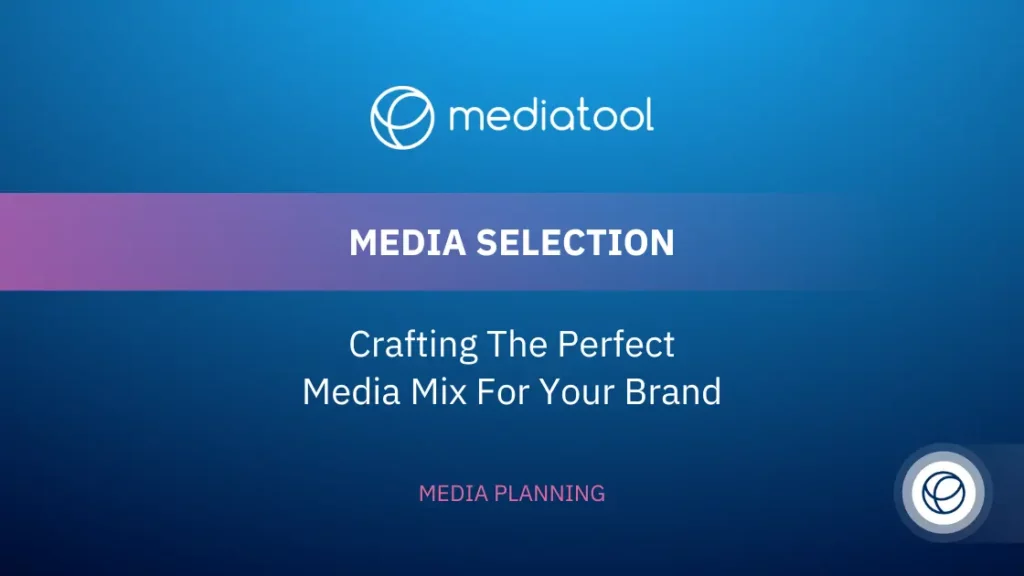Choosing the right channels for your ads can be tricky.
With so many options, it’s easy to feel lost.
Pick wrong, and you might waste time and money without reaching the right people.
This is where smart media selection comes in.
It’s all about finding the best spots for your ads, matching them with your audience, and sticking to your budget.
This article breaks down how to make those choices without the headache. We’ll guide you through understanding your audience, setting clear goals, smart budgeting, and picking the right channels.
What is Media Selection?
Media selection refers to the process of choosing the best channels to distribute an advertising message to the intended target audience. It’s an essential step in media planning, ensuring marketing efforts effectively reach potential customers.
Media selection isn’t just about picking a place for your ads. It’s about finding the right mix where your advertising campaign will flourish.
Why is Media Selection Important?
In today’s digital age, we’re spoilt for choice with so many channels available. From social media to television advertising, the options are vast. However, not all media channels will meet your advertising objectives or connect with your target audience.
That’s where media selection comes into play. It helps narrow the vast field to the right media channels, ensuring your advertising budget is spent wisely, aiming for maximum impact and increasing sales.
Media selection bridges the gap between the advertising message and the audience, ensuring the right people see your ad at the right time. It’s a strategic decision that influences the success of marketing campaigns, big or small.
Whether launching a media campaign on national television or targeting specific customers through social media ads, choosing the right platform can significantly boost your brand’s visibility and engagement.
Types of Advertising Media

The media advertising landscape is rich and varied, offering numerous pathways for businesses to connect with their audience. By understanding the strengths and applications of each, media planners can craft a media plan that aligns perfectly with their marketing objectives.
Let’s explore these types in more detail.
Television Advertising
Television advertising stands out for its vast reach and ability to offer national coverage. It’s a powerful medium for broadcasting your advertising message to a broad audience, making it a cornerstone of many advertising campaigns.
Television advertising leverages the mass media’s ability to convey compelling stories through visual and audio mediums, engaging viewers and leaving a lasting impact.
Despite its effectiveness, it’s known as a costly media choice, necessitating careful consideration of the advertising budget. However, the expense can be justified by its unparalleled reach and its depth of engagement.
Radio Advertising
Radio advertising has a unique charm, offering a blend of local appeal and specific demographic targeting. It’s perfect for reaching audiences within a particular geographical area or interest group, making it a cost-effective choice for local businesses or those with niche markets.
With options ranging from local radio stations to national networks, radio advertising allows marketers to speak directly to their target audience, even enabling action immediately, such as during a drive-time advertisement prompting a purchase decision.
Print Media
Print media, encompassing local newspapers, print magazines, and trade magazines, caters to various interests and offers the advantage of national coverage or focused appeal. It’s a trusted medium, respected for its journalistic standards and ability to provide in-depth information.
Whether a full-page ad in a national magazine or a targeted placement in a trade publication, print media offers a tangible way to reach different audiences, from the general public to industry-specific readers.
Online Advertising
Online advertising is a dynamic and constantly emerging field comprising banner ads, video ads, and rich media ads across digital platforms. It’s highly targeted, leveraging data to reach potential customers with precision.
The variety of ad formats available, from simple web page banners to engaging online video content, allows for creative and flexible marketing campaigns.
Online advertising channels are particularly effective for reaching specific channels and audience segments, offering real-time bidding to place ads in front of the right people at the right time.
Social Media
Social media is a powerhouse for modern advertising, providing a platform for highly targeted ads based on extensive user data. It allows for direct customer engagement, fostering a sense of community and brand loyalty.
The versatility of social media platforms means advertisers can choose from various ad formats, from simple posts to sophisticated video ads, catering to the marketing efforts’ specific objectives.
It’s an essential part of the media mix for any campaign looking to increase sales and reach consumers on a personal level.
Out-of-Home Advertising
Out of Home (OOH) advertising includes billboards, transit ads, and other physical ad spaces that capture the audience’s attention in public places. It’s great for high visibility in key geographical areas, from busy city centers to tranquil highways.
OOH advertising excels in reaching a wide audience, making it an effective complement to other advertising media channels in a comprehensive media campaign.
It’s particularly effective for messages influencing purchase decisions, offering a broad canvas for creative expression and brand awareness.
Each advertising media type plays a crucial role in media selection, helping media planners and marketers craft advertising campaigns that resonate with their target audience. By considering the media mix’s relative cost, reach, and effectiveness, businesses can allocate their advertising budget to maximize impact and drive results.
Selecting the right media channels is about more than just where to place your ads; it’s about creating connections, telling stories, and achieving marketing objectives with precision and creativity.
Selecting the Correct Media

Selecting the right media is intricate, blending art with science to find the perfect channels for your message. Let’s break down the steps to select the best media for your advertising needs.
1. Know Your Audience
Understanding your target audience is the cornerstone of effective media selection. Dive into market research to uncover the preferences, habits, and media consumption patterns of your potential customers.
This isn’t just about age or location; it’s about grasping the nuances of their daily lives and how they interact with various media platforms. Whether they’re scrolling through social media, tuning into a favorite radio station, or reading print magazines, knowing where your audience spends their time is essential.
This insight directs media planners to the right channels, ensuring the advertising message resonates with the intended audience.
2. Define Your Objectives
Clear marketing objectives are the compass that guides your media selection. Are you aiming to increase brand awareness, boost engagement, or drive direct sales? Each goal might lead you to different advertising media.
For instance, an awareness campaign might benefit from the broad reach of television advertising or mass media, while engagement could be better fostered through interactive digital ads. Defining these objectives early on helps in aligning your media plan with your overall marketing goals, ensuring every ad space purchased contributes towards achieving these targets.
3. Consider Your Budget
Budget considerations are crucial in media selection. Not all media channels are created equal, especially when it comes to cost. Balancing your ad budget means evaluating the relative cost of different advertising mediums and selecting media that offer the best return on investment.
This is where media buying becomes an art, requiring media planners to negotiate for the best rates and ad formats that maximize visibility without overspending. Whether it’s securing prime ad space in a high-profile online platform or opting for video advertising with its higher engagement rates, budgeting carefully ensures your financial resources are allocated effectively.
4. Analyze Media Options
With so many channels available, analyzing your options is key. This involves looking at various media from digital ads to traditional print, considering their reach, frequency, and the type of engagement they offer.
Media planners play a crucial role here, weighing the pros and cons of each advertising medium against the campaign’s specific objectives.
This step is about understanding the unique benefits of different channels, from the immediacy of social media to the enduring presence of out-of-home advertising, and how they can be combined in a cohesive media mix to amplify your message.
5. Test and Measure
Finally, the end of a media campaign marks the beginning of another important phase: testing and measuring. Implementing your media plan is just the start. The real insights come from analyzing how different ads perform across various media.
This could involve A/B testing for digital ads, monitoring engagement rates on social media, or assessing the impact of a television campaign on website traffic.
Media scheduling and performance metrics guide future decisions, allowing marketers to refine their approach and optimize media selection for better results.
Conclusion
Media selection is a cornerstone of effective advertising. It’s not just about where you place your ads, but about crafting a strategy that speaks directly to your audience, through the right channel, with the right message. By carefully selecting media, advertisers can optimize their advertising budget, meet their marketing goals, and ultimately, connect with customers in meaningful ways.





